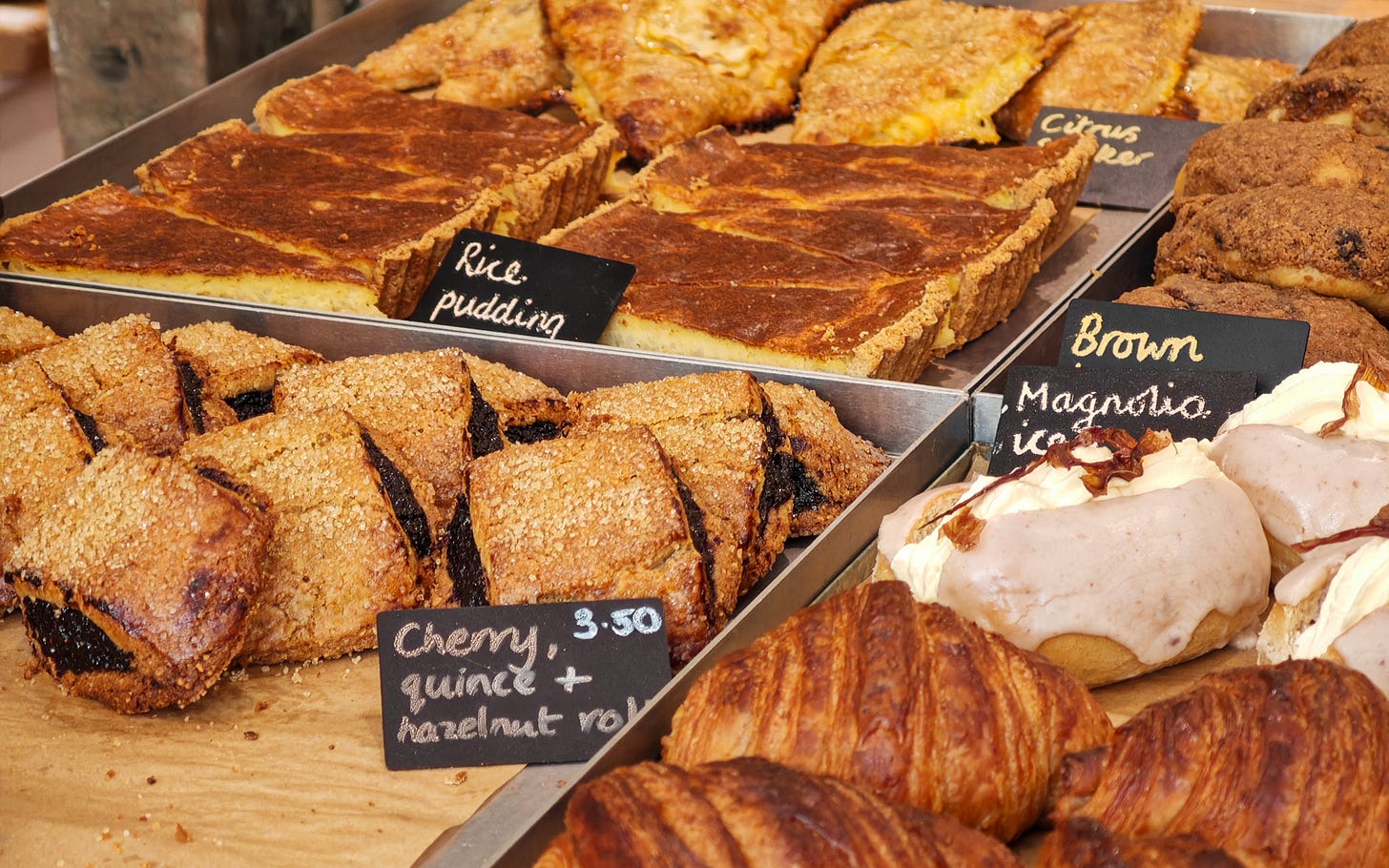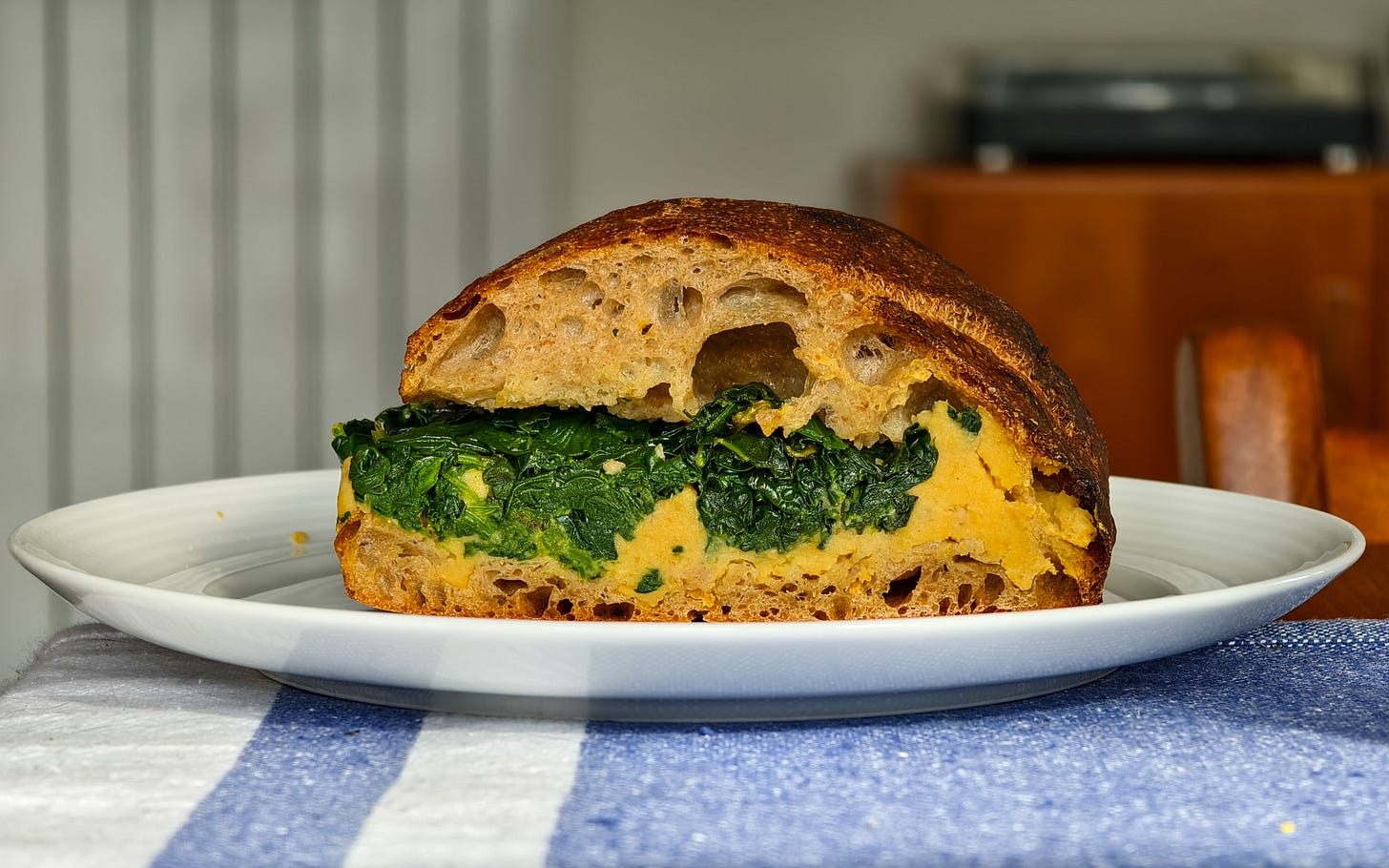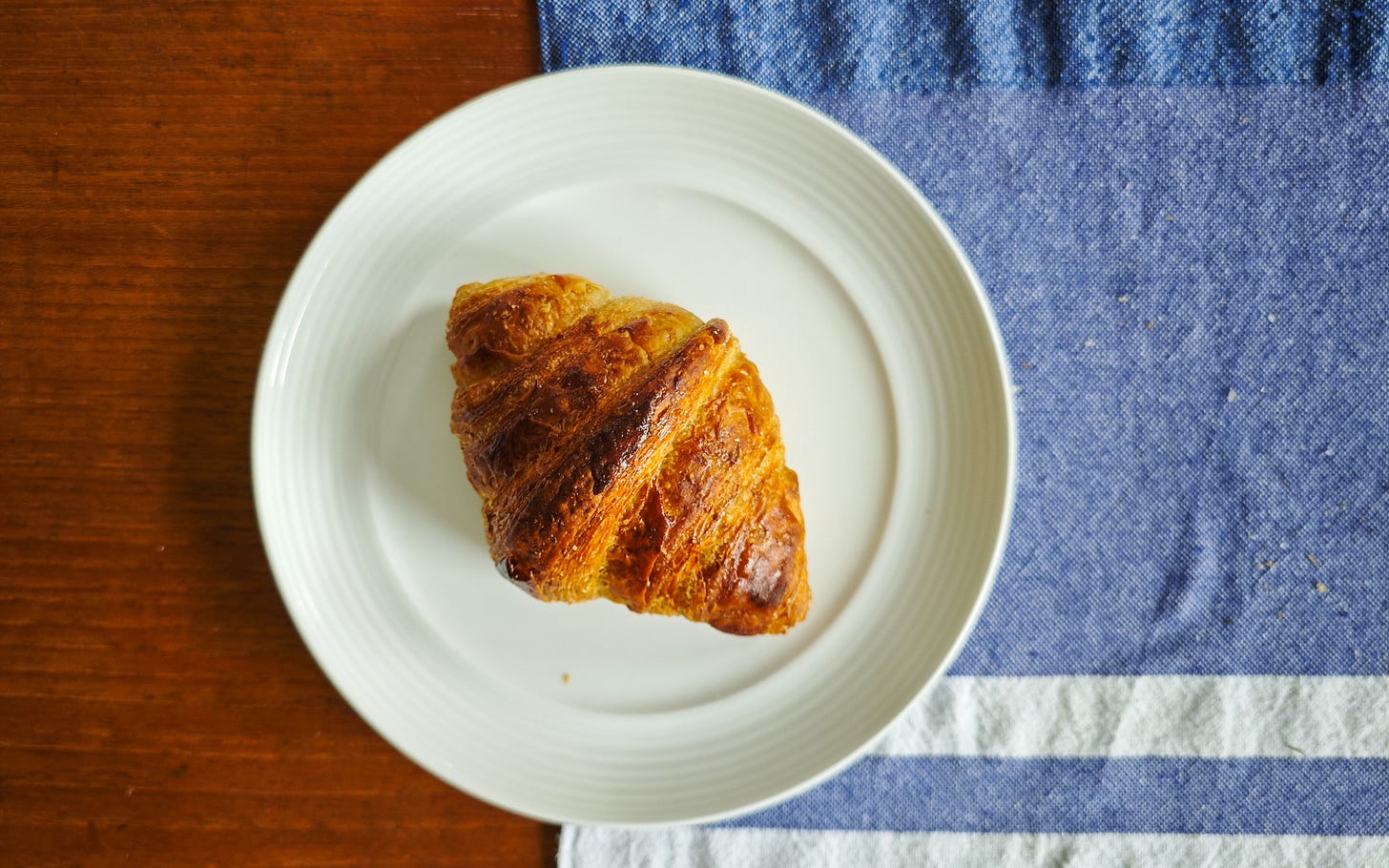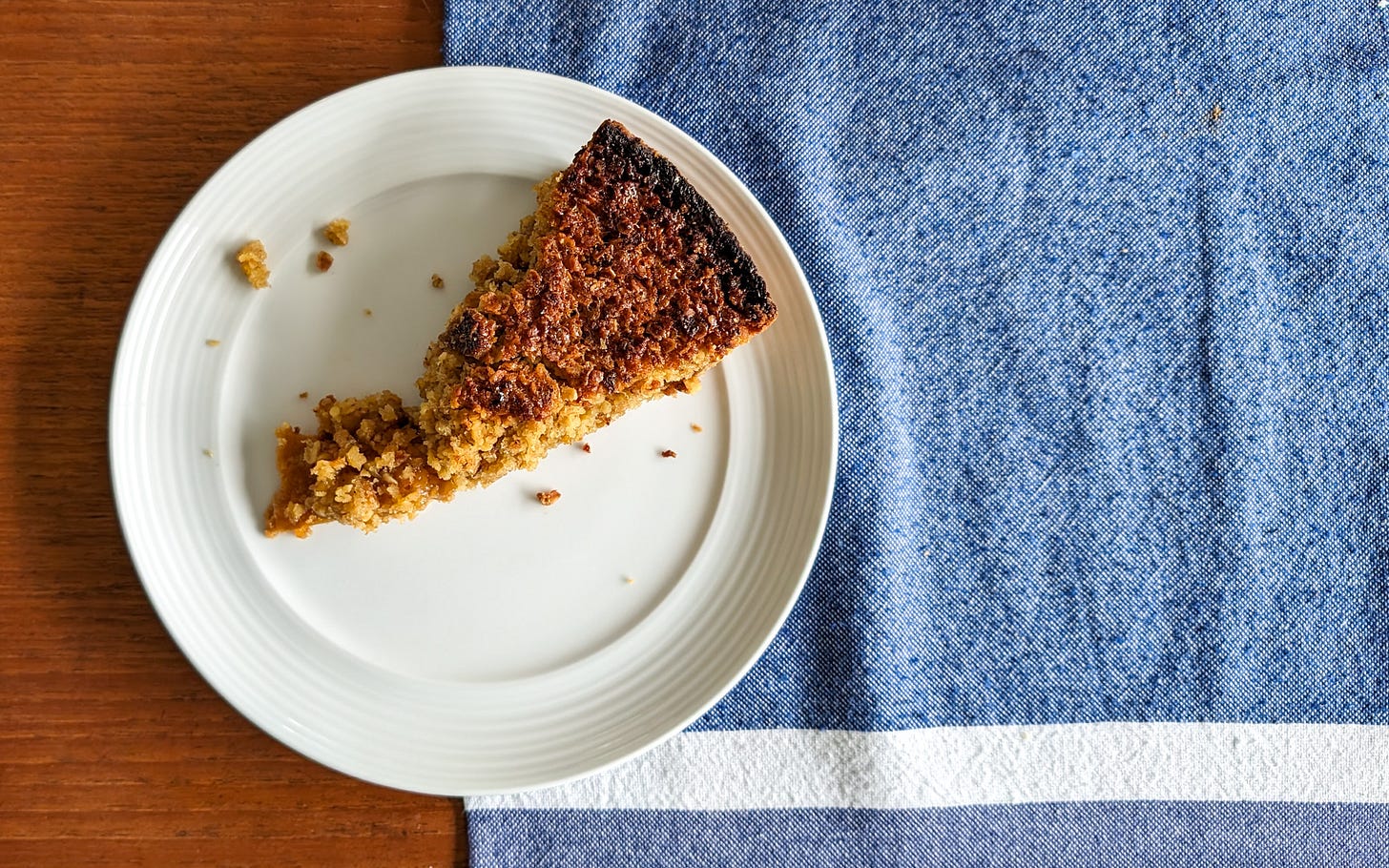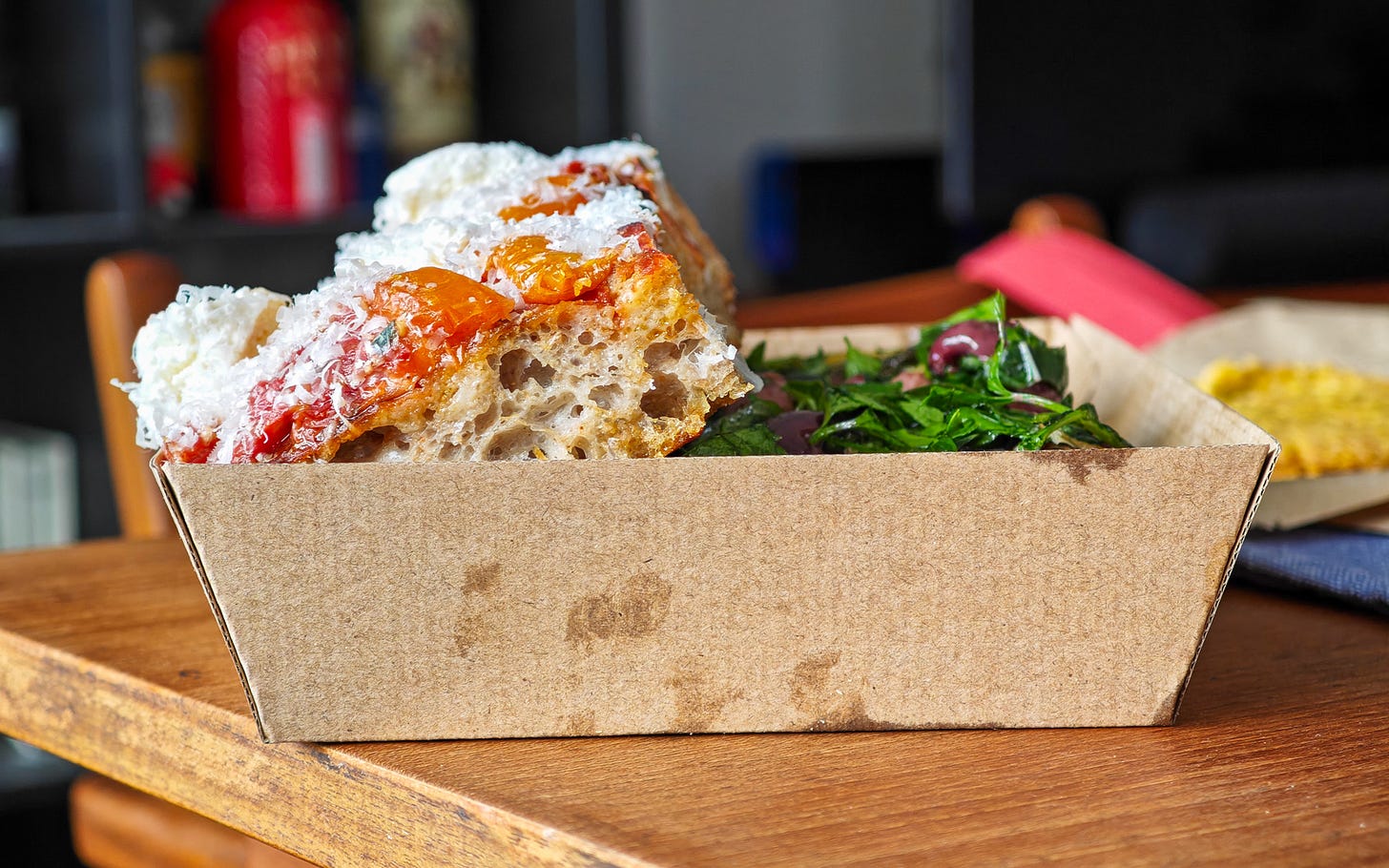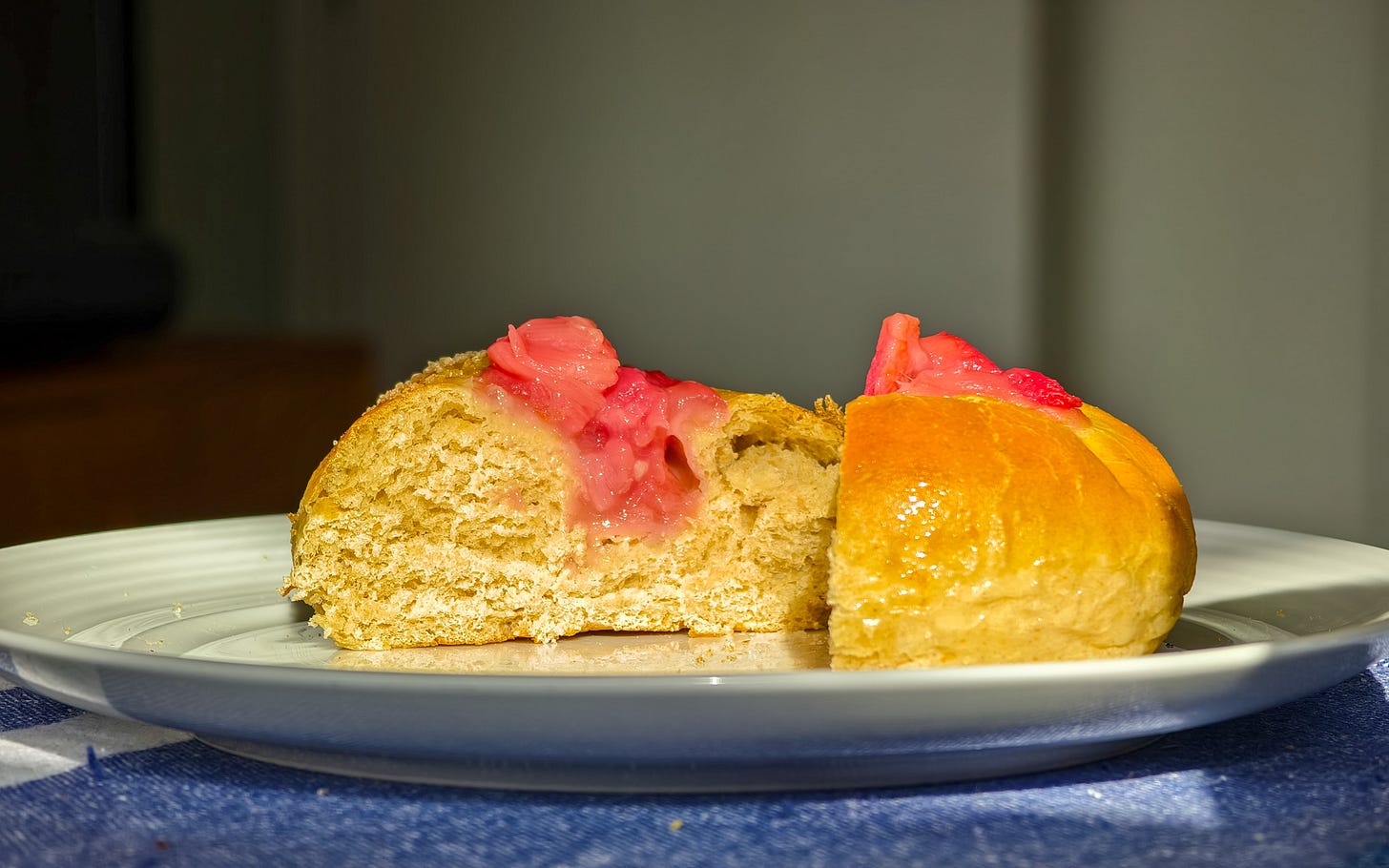I think it’s only fair to open with an admission: I didn’t really get Quince Bakery the first time I went. The first couple times, while I’m being honest.
Quince isn’t your typical London bakery, you see. It’s takeaway-only, without even room to perch with a coffee and a croissant. They don’t usually sell croissants, for that matter, or really any viennoiserie at all — on an early visit I saw two women inspect the pastry selection intently, before asking with a hint of concern: “Don’t you have any cinnamon rolls?”
Pastry chef Anna Higham launched Quince this February in a rather dangerous spot halfway between me and my gym. With a history at The River Cafe, Lyle’s, and Flor, she certainly has the credentials to justify the bakery’s early hype, and it’s fair to say I was excited to make my way down.
I went twice, in fairly quick succession, but couldn’t fully warm to the menu of chickpea sandwiches and wholewheat buns. The bread itself blew me away, but compared to the easy, flaky pleasures of nearby Pophams, Quince’s treats felt a little too bready, too healthy, too… worthy.
I have two other bakeries to thank for turning me into a Quince convert. The first was two.eight.seven, whose founders/owners/bakers Anna and Sam Luntley spent a week in residency at Quince, baking together with Higham. I popped down, tempted by the promise of grandma slice pizza, and left with what I’m afraid might have been the best croissant I’ve ever eaten. This is a problem because two.eight.seven is based in Glasgow, and I am not.
Hand-laminated, it offered a perfect honeycomb of soft, layered innards and crisp, flaky outards, but also a depth of flavour hinted at by its colour, a few shades darker than the buttery gold of your average croissant.
Leila’s in Shoreditch held the explanation. I spent a sunny Sunday morning sitting in on a talk between Leila’s baker Stroma Sinclair and Emma Shires from the Nottingham Mill Cooperative, both busily espousing the virtues of wholegrain, stone-ground flours — not only for dense, dark breads, but for pastries, pies, and all sorts else. The grains add warmth and complexity that plain flour simply cannot, a complement rather than a threat to pastries’ sweeter sides.
The penny dropped, that croissant vivid in memory, and I realised they might be onto something after all. A slice of absurdly excellent crème fraîche berry custard tart, with an einkorn flour base, didn’t exactly hurt the case.
I returned to Quince with fresh eyes and renewed appreciation. A rice pudding and blackcurrant tart, pale grains wobbling above deep brown pastry. A colossal slab of oats and rich, rich honey, barely bound together into a tart, ready to crumble at the slightest invitation. A saffron cookie, generous enough with the spice for it to lend a dominant flavour rather than a mere hint of colour, almost as savoury as it is sweet.
There’s a homely charm to it all, the sort of things you could imagine baking yourself one day (albeit not half so well), or that someone’s mum might whip up in an Enid Blyton novel.
The bread remains a revelation, perhaps the best integration of wholewheat flours into a sourdough I’ve had yet, heaps of flavour without giving up that elastic texture. It wows me especially in a cheddar and tomato chutney sandwich that essentially serves as a posher version of the Pret posh cheddar and pickle baguette. The cellophane-wrapped train station stalwart will never quite seem the same again.
Vivian is especially partial to the grandma slices, though really only one: a tomato and ricotta number proves uncannily close to the strips of bakery pizza she grew up with in Rhode Island; for me it simply provides the irritating service of outdoing every slice of sfincione we order the following week in Sicily.
If I began with a confession, I suppose I might as well end with one. I still don’t really get the buns. Dense balls, closer to bread than cake, with what always feels like not quite enough fruit or custard for the job.
Perhaps that means Quince still has something to improve upon, perhaps only that I still have something to learn. Six months ago, I would have stuck to my guns and insisted upon the former. Now, begrudgingly, I’ll admit that Higham et al. might be in the right.





